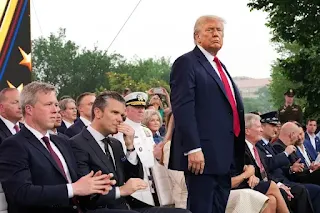Search mystery
Labels
Labels
- and what it means for the future of European football.1
- April 2025 News1
- Border Conflict1
- Cardinals Election1
- Catholic Church Mystery1
- Celebrity Death 20251
- Celebrity News1
- Covert Operations1
- Cultural Representation1
- Delta Flight 2417 Flight Ceiling Collapse Airline Safety Aviation News USA Trending News Air Travel Incident Flight Emergency Mystery and Investigation Breaking News USA 2025 Airline News1
- Faith and Power1
- Funk Pioneer1
- Geopolitical Documentary1
- Global Religion1
- Government Secrets1
- Hollywood Obituary1
- Hollywood Tribute1
- Hulu Revival1
- India-Pakistan Tensions1
- Jonathan Joss1
- King of the Hill1
- Military Anomalies1
- Music History 20251
- Music Legends1
- Mystery and Documentary Blogs1
- Native American Actors1
- Northern Exposure1
- Papal Secrets1
- Pope Francis News1
- PSG defeats Inter Milan 5-0 in the UEFA Champions League Final 2025 to win their first-ever title. Highlights1
- Questlove Documentary1
- reactions1
- Real Life Mysteries1
- Real-Life Mysteries1
- Religious Documentary1
- Rome Politics1
- San Antonio News1
- Sly & the Family Stone1
- Sly Stone1
- South Asia1
- TV Legends1
- Unsolved Cases1
- Valerie Mahaffey1
- Vatican Conclave1
- WWII Mysteries Aviation Disappearances Real-Life Unsolved Mysteries Military History Strange Disappearances Paranormal Events Ghost Blimp Haunted History Story Lose 1940s Mystery2
Featured
- Get link
- X
- Other Apps
🎖️ Trump’s Military Parade Attendance: Reality vs. Claims — What You Need to Know
On June 14, 2025, former President Donald Trump’s long-promised military parade finally marched through Washington, D.C. — a spectacle blending the U.S. Army’s 250th anniversary with Trump’s 79th birthday. But amid the tanks, bands, and bravado, a fierce crowd-size controversy erupted.
📚 Background: A Politicized Spectacle
Trump envisioned a military pageant full of tanks, troops, and aerial displays, stating it would be a celebration of strength and heritage (theguardian.com, en.as.com). The Army projected a 200,000-person attendance and earmarked $25–$45 million for the event (pbs.org).
Massive security infrastructure was put in place—18 miles of fencing, magnetometers at checkpoints, flight restrictions, and large-scale road closures (abcnews.go.com).
📊 Attendance Claims vs. Reality
-
Official White House claim: Trump’s communications director, Steven Cheung, asserted over 250,000 attendees, but this was immediately challenged (thedailybeast.com).
-
On-the-ground estimates: Media outlets like Axios and AP reported the crowd was well below expectations, with “empty seats” visible and the National Mall appearing sparse compared to projections (axios.com).
-
Military’s own figures: Army officials had anticipated up to 200,000 attendees, but rain, heat, and simultaneous nationwide “No Kings” protests likely suppressed turnout (axios.com).
Veterans were divided—some viewed it as a long-overdue tribute, others criticized it as overshadowing or personalized for Trump (apnews.com).
🔍 Analysis & Implications
-
Credibility Crisis
The dramatic gap between the claimed 250,000+ attendees and actual visible turnout revived memories of past Trump-era crowd-size disputes, hurting credibility . -
TV Over Reality
While TV coverage highlighted rows of soldiers, tanks, and fireworks, in-person seats on Constitution Avenue and the Mall remained noticeably unfilled—especially amid rain delays (axios.com). -
Counter-Protests Drove Away Many
With over 2,000 “No Kings” protests in U.S. cities, civic backlash may have outweighed rally attendance (axios.com, thetimes.co.uk). -
Cost vs. Benefit Debate
Though supporters saw it as reclaiming patriotic display, critics questioned the justification of $25–$45 million public expenditure for what effectively became a personalized Trump event (theguardian.com).
📣 Public & Political Reaction
-
Media and observers mocked the inflated attendance claims, with references to Sean Spicer-era crowd tallies (thedailybeast.com).
-
Veterans’ opinions were split—some appreciated public recognition, others criticized the parade's personalization and disruption (pbs.org).
-
No Kings movement saw massive success, with millions protesting across the country, overshadowing the parade itself (apnews.com).
🔮 What’s Next?
-
Fact-check Follow-ups: Media and watchdogs will continue dissecting crowd estimates—questions over repricing, security costs, and police overtime reimbursements loom.
-
Architecting Future Events: Pentagon and city officials may reassess using such high-cost displays, especially when partisan optics threaten unity.
-
2025 Election Impact: The crowd size uproar adds to narratives about Trump’s polarizing tendencies—and could shape voter sentiment in swing states.
✏️ FAQs
1. What was the estimated attendance?
Army officials projected up to 200,000; White House claimed 250,000+. Observers later noted much lower turnout (theguardian.com, centerforpoliticalawareness.com).
2. Why are numbers in dispute?
Visibility of empty seats and conflicting visuals led many to challenge the White House’s inflated figures (thedailybeast.com).
3. How much did the parade cost?
Between $25 million and $45 million, including repairs—paid by taxpayers (pbs.org).
4. Did weather affect turnout?
Yes—muggy conditions and thunderstorms caused delays and likely deterred attendees (axios.com).
5. Were there protests?
Yes—millions joined “No Kings” rallies across the U.S., overshadowing the D.C. event (apnews.com).
6. Was the parade's purpose military or political?
Officially marking the Army’s 250th anniversary, critics said it served as Trump’s personal stage (nbcwashington.com).
7. What did veterans think?
Opinions varied—some appreciated the tribute; others felt it politicized military honors .
8. How does this reflect on Trump?
It echoes past controversies over reality vs. spin—and showcases his appetite for spectacle .
9. Will future parades happen?
Possibly, though plans may shift as public skepticism and security concerns rise.
10. Who calculates these estimates?
Estimates come from Army planners, press photographers, and independent analysts—each with different data .
- Get link
- X
- Other Apps
Popular Posts
Cicada 3301: The Internet’s Greatest Unsolved Puzzle Explained
- Get link
- X
- Other Apps
🇺🇸 “No Kings” Protests and Rising Tensions: A Nation at a Turning Point
- Get link
- X
- Other Apps

.webp)

Comments
Post a Comment